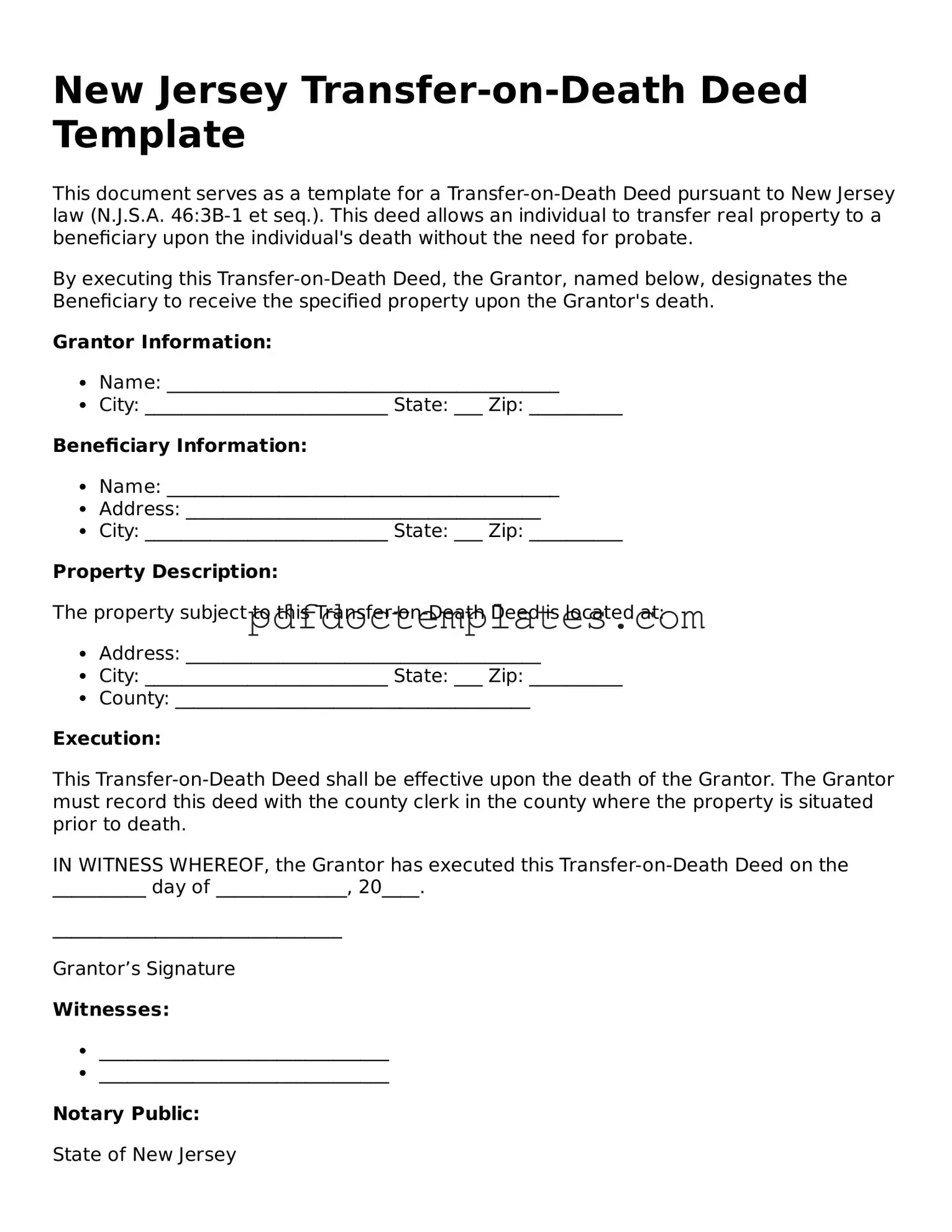New Jersey Transfer-on-Death Deed Template
This document serves as a template for a Transfer-on-Death Deed pursuant to New Jersey law (N.J.S.A. 46:3B-1 et seq.). This deed allows an individual to transfer real property to a beneficiary upon the individual's death without the need for probate.
By executing this Transfer-on-Death Deed, the Grantor, named below, designates the Beneficiary to receive the specified property upon the Grantor's death.
Grantor Information:
- Name: __________________________________________
- City: __________________________ State: ___ Zip: __________
Beneficiary Information:
- Name: __________________________________________
- Address: ______________________________________
- City: __________________________ State: ___ Zip: __________
Property Description:
The property subject to this Transfer-on-Death Deed is located at:
- Address: ______________________________________
- City: __________________________ State: ___ Zip: __________
- County: ______________________________________
Execution:
This Transfer-on-Death Deed shall be effective upon the death of the Grantor. The Grantor must record this deed with the county clerk in the county where the property is situated prior to death.
IN WITNESS WHEREOF, the Grantor has executed this Transfer-on-Death Deed on the __________ day of ______________, 20____.
_______________________________
Grantor’s Signature
Witnesses:
- _______________________________
- _______________________________
Notary Public:
State of New Jersey
County of ______________________
On this __________ day of ______________, 20____, before me, a Notary Public, personally appeared __________________________________, known to me to be the person described in this document, and acknowledged that he/she executed the same for the purposes therein contained.
_______________________________
Notary Public Signature
My Commission Expires: ___________
